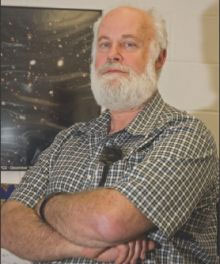September 8, 2004
PEOPLE TO WATCH
Cosmic curiousity: Michael A'Hearn, principal investigator for the Deep Impact mission
By Jeremy Hsieh
Senior staff writer
(Special to The Diamondback)
 |
|
| The Deep Impact mission, led by astronomy professor Michael A. Hearn, will launch a composite spacecraft into the path of the comet Tempel 1. JOSEPH COKER FOR THE DIAMONDBACK | |
When university astronomy professor Michael A'Hearn first began pursuing astronomy 40 years ago, he thought he'd end up in a remote part of the world near an astronomy observatory.
Little did he know he'd be exchanging correspondence with acclaimed science fiction author Arthur C. Clarke because of his role in a $313 million NASA space mission studying the solar system's history.
A'Hearn is the principal investigator for the Deep Impact mission - his first time heading a space mission - which will launch a composite spacecraft into the path of comet Tempel I this winter. As the spacecraft nears the comet in summer 2005, it will separate into two parts: the flyby and the impactor. Tempel I will smash into the relatively small impactor while the flyby will record the comet's contents spewing out of the crater created by the collision, analogous to a car going about 23,000 mph hitting a very dense fly.
By studying the comet's contents, which are suspected to be as old as the solar system, A'Hearn hopes to uncover clues to the solar system's origins.
Clarke, who is best known for writing 2001: A Space Odyssey, in which he describes a similar mission, e-mailed A'Hearn to let him know he thought the project was a good idea.
But with the 30-day launch window opening Dec. 30 of this year, the workload is becoming more and more demanding.
"I'm not particularly worried about getting to the launch; I'm worried about making sure we can analyze all the data," A'Hearn said.
With clutter piled high all over his office, A'Hearn said he hasn't taught a lecture class at the university since 2002 because he regularly hops on to jets bound for the Jet Propulsion Laboratory at the California Institute of Technology, Ball Aerospace Technologies Corporation in Colorado and the spacecraft's launch site at the Kennedy Space Center in Cape Canaveral, Fla., to be present for various reviews.
A'Hearn won't have it easy until a year after the impact in 2006.
"That's when we will have gotten the cream of the science; not all of it by any means, but we'll have skimmed the cream off the top," A'Hearn said.
A'Hearn, 63, plans to retire in the next two or three years, but said he will probably continue to play a role in future space missions.
How does he feel about the nearly decade old project finally coming to a head?
"I don't even have time to think about it," he said.
More information about Deep Impact is available online at deepimpact.umd.edu.
(This article was reproduced with permission from the author. The original can be found at: www.inform.umd.edu/News/Diamondback/archives/2004/09/08/news5.shtml)











